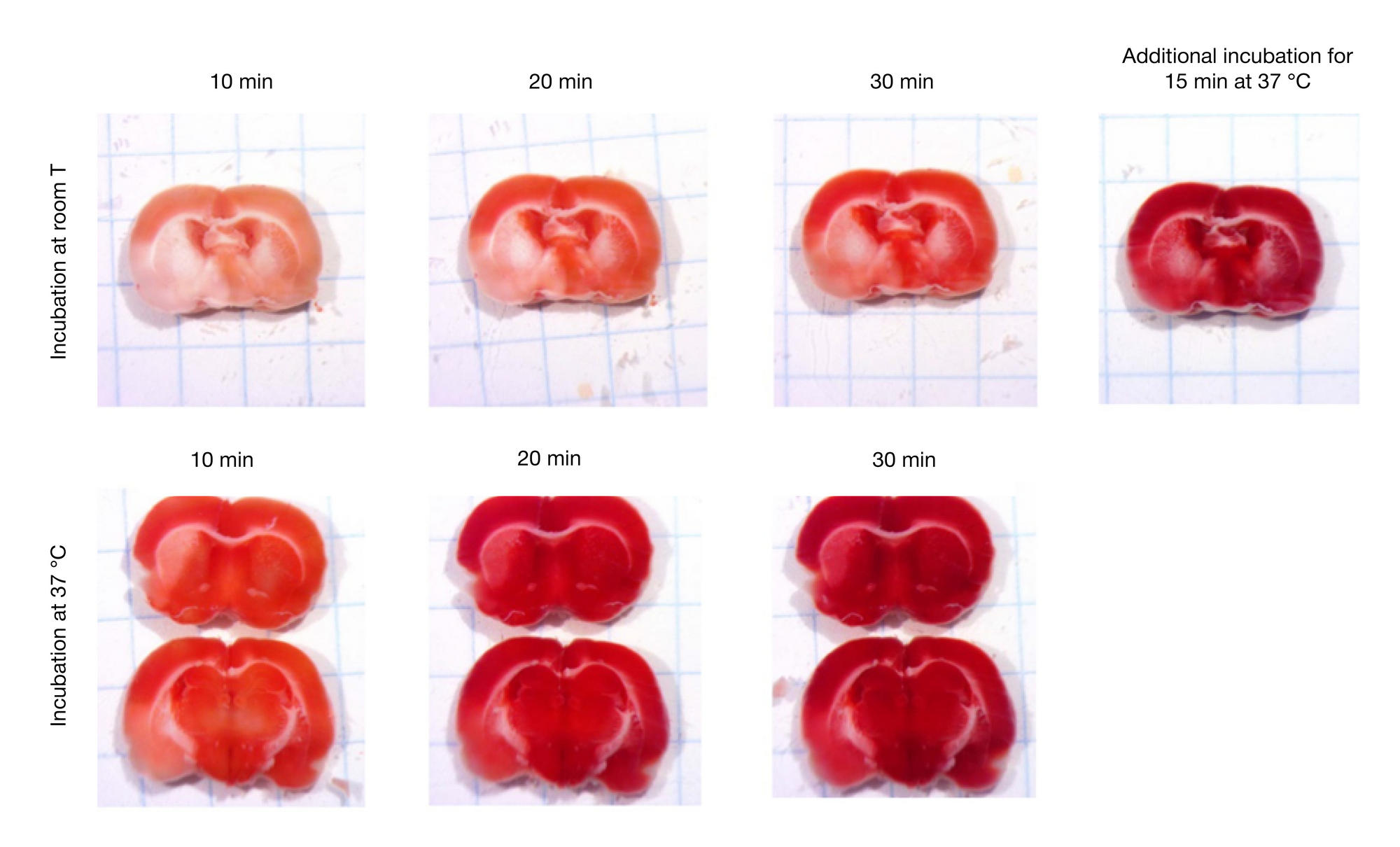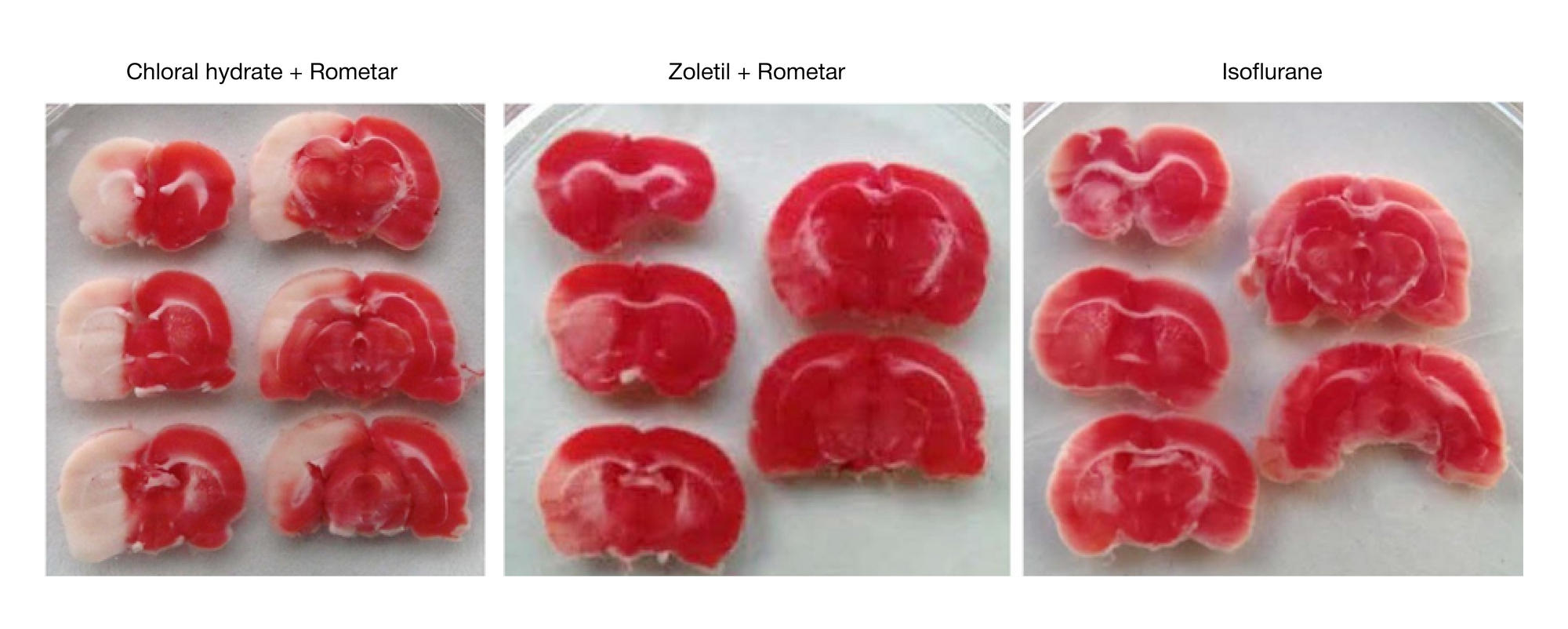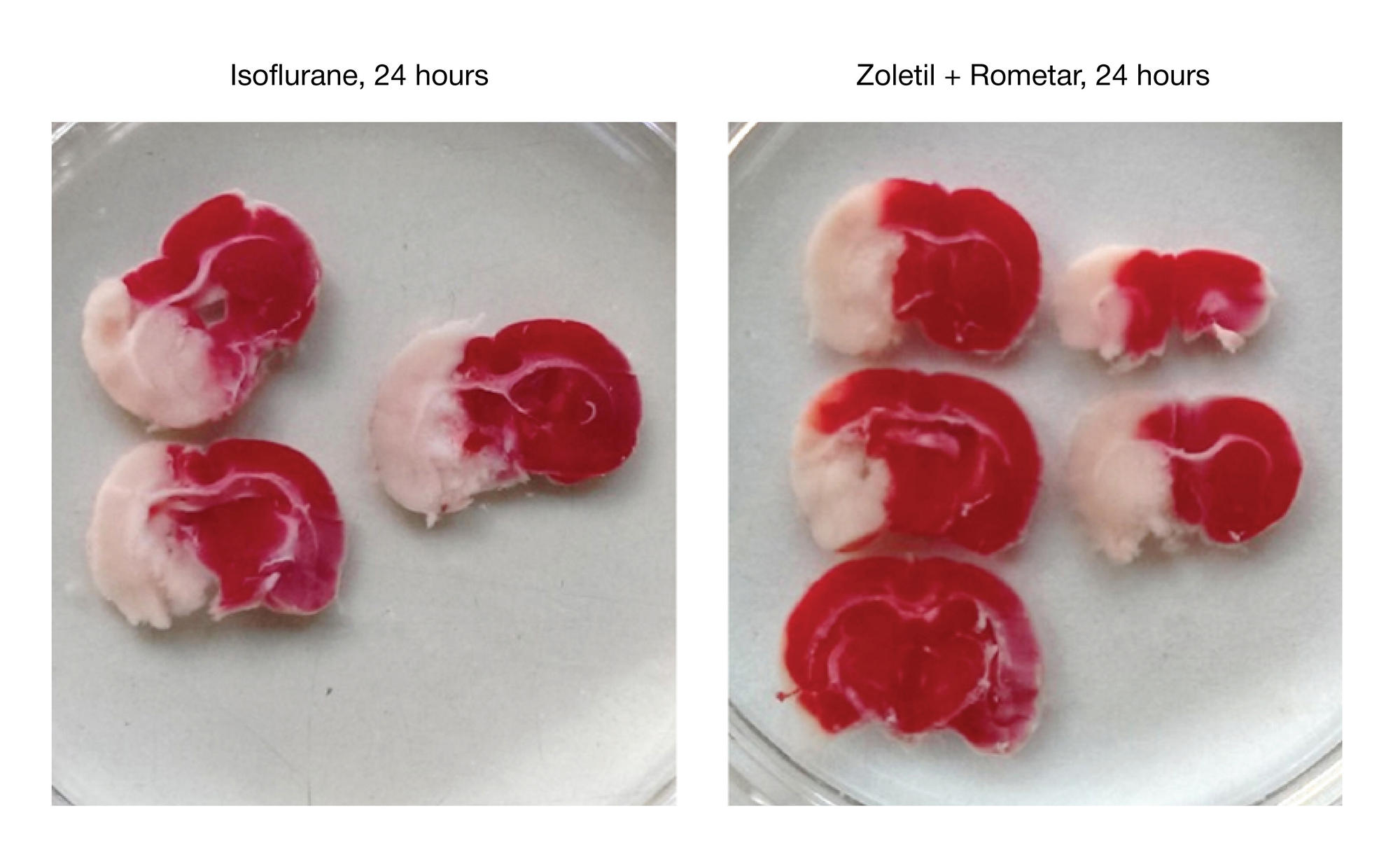
ORIGINAL RESEARCH
The choice of anesthetic type and conditions for 2,3,5-triphenyltetrazolium chloride staining of brain slices is important in the assessment of ischemic injury in rats in the early stages of pathology
1 Laboratory for Molecular Technologies,Shemyakin and Ovchinnikov Institute of Bioorganic Chemistry of the Russian Academy of Sciences, Moscow, Russia
2 Department of Brain-Computer Interfaces, Research Institute for Translational Medicine,Pirogov Russian National Research Medical University, Moscow, Russia
Correspondence should be addressed: Vsevolod Belousov
ul. Miklukho-Maklaya, d. 16/10, Moscow, Russia, 117997; ur.hcbi@vosuoleb
Funding: this work was supported by the Russian Science Foundation (Grant 17-15-01175).
All authors' contribution to this work is equal: selection and analysis of literature, research planning, data collection, analysis, and interpretation, drafting of a manuscript, editing.


